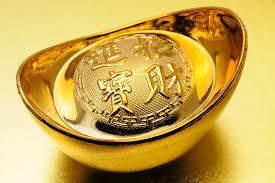China’s Silk Road Gold Fund – The Central Asian Gold Deposits

 China’s Silk Road Gold Fund was launched in 2015, and has begun trading on the Shanghai Gold Exchange. According to Xinhua, over 60 countries have invested in the US$16 billion fund, which aims to provide financing to extract gold from existing, but underutilized deposits. The main concept is that the fund will invest in extraction equipment and technologies, then split the value of the mined gold with the sovereign nation whose deposits are being exploited; this, both, creates value for the fund and generates much-needed sovereign wealth for the participating nations.
China’s Silk Road Gold Fund was launched in 2015, and has begun trading on the Shanghai Gold Exchange. According to Xinhua, over 60 countries have invested in the US$16 billion fund, which aims to provide financing to extract gold from existing, but underutilized deposits. The main concept is that the fund will invest in extraction equipment and technologies, then split the value of the mined gold with the sovereign nation whose deposits are being exploited; this, both, creates value for the fund and generates much-needed sovereign wealth for the participating nations.
Interestingly, although India has not signed up to China’s Belt and Road Initiative, it has invested heavily in both China’s Asian Infrastructure Investment Bank and the Silk Road Gold Fund. This is significant because China and India are collectively the world’s two biggest producers and consumers of gold. The 70 countries that have signed up to the Belt and Road Initiative also account for more than half of the world’s gold production and 80 percent of the total global gold consumption.
The fund’s two biggest initial shareholders are gold companies hoping to get in on the mining industry at a good price. Shandong Gold Group bought 35 percent of the shares and Shaanxi Gold Group bought 25 percent.
Roland Wang, the Managing Director of the World Gold Council in China, has said “the initiative will help the Chinese gold mining companies jointly explore the precious metal industry in those countries [along the Silk Road].” The first in what is likely to be a long line of deals involving China’s gold companies in the region has already gone through. In May 2017, Russia’s Polyus Gold (OPYGY) said it would cooperate with China’s largest gold company – China National Gold Group – to explore Russia’s biggest gold deposit at Natalka in the far eastern part of Magadan’s Kolyma district. The fund may also include setting up an exchange-traded fund that will invest in gold and gold mining companies.
In this series of articles, we take a look at where the gold deposits are that China’s Silk Road Gold Fund is likely to target. Today we look at Central Asia. Gold reserves are the amount held by the Central Bank. Known gold deposits are estimates of as yet unmined gold. Figures mentioned are in metric tons.
| Country | Gold reserves * | Known gold deposits ** | Key areas |
|---|---|---|---|
| China | 1842 | 2500 | Shandong |
| Afghanistan | 21.97 | 30+ | Panj, Samti, Zarakshan |
| Armenia | 0 | 220 | Tukhmanuk, Zod |
| Azerbaijan | 0 | 400+ | Gedabek, Gosha |
| Belarus | 46.49 | – | |
| Georgia | 0 | 14 | Sadrisi |
| Iran | 907 | 320 | Zarshuran |
| Iraq | 89.82 | 30 | Aldajh, Western Desert |
| Kazakhstan | 295.66 | 800 | Komarovskoye, Vasilkovskoye |
| Kyrgyzstan | 6.36 | 616 | Kumtor |
| Mongolia | 3.09 | 400+ | Gatsuurt, Oyu Tolgoi |
| Pakistan | 64.56 | 1,200 | Reko Diq |
| Russia | 1828.56 | 12,500 | Krasnoyarsk, Irkutsk, Magadan, Amur, and Chelyabinsk |
| Tajikistan | 15.14 | 430 | Jilau, Pakrut |
| Turkey | 525.79 | 800 | Mastra, Ovacik, Uşak- Kişladag |
| Turkmenistan | 5 | 10 | Tourkyr |
| Uzbekistan | 0 | 5,000 | Muruntau |
* Data from Trading Economics
** Data from Mining Technology & Rare Gold Nuggets.
The above data demonstrates the immense wealth still held in the form of gold deposits in the Central Asian region, with Azerbaijan, Kazakhstan, Kyrgyzstan, Mongolia, Pakistan, Tajikistan, Turkey, Uzbekistan, and the gold behemoth that is Russia, all possessing significant deposits in excess of 400 tonnes. By comparison, China currently has about 7 percent of all known global gold deposits at about 2,500 tons, and is mining this at an rapidly increasing rate; in 2017, it produced 470 tons.
Of the countries shown, all have signed the Belt and Road MoU with China, and all have bilateral investment treaties in place with the country. All possess good diplomatic and trade relations, showcasing China’s efforts to secure the potential for gold generation.
Excluding China, the Central Asian countries featured collectively have gold reserves of 4,108 tons and known gold deposits of some 22,770 tons. In comparison, the U.S. has known reserves of 4,582 tons, with an estimated 9,500 tons still in unmined deposits.
The story of the Silk Road Gold Fund, however, is not just restricted to Central Asia. In the following days, we will feature the gold reserves and deposits held in South-East Asia, Africa, and Latin America, all of which possess significant deposits, and have signed off on MoUs with China’s Belt and Road Initiative.
About Us
Silk Road Briefing is produced by Dezan Shira & Associates. The firm provides business intelligence, investment advisory, due diligence, tax advisory, corporate establishment and structuring, accounting, payroll and related professional services throughout China, India, ASEAN, Russia and the Eurasian region, servicing both Governments and Multinational clients. To contact us please email silkroad@dezshira.com or visit us at www.dezshira.com
 Related Reading:
Related Reading:
![]() China, Russian Combined Gold Reserves to Establish New Gold Standard
China, Russian Combined Gold Reserves to Establish New Gold Standard
![]() Devaluation of USD Predicted as China & Russia Buy Up Gold Reserves
Devaluation of USD Predicted as China & Russia Buy Up Gold Reserves
Silk Road and OBOR Business Intelligence
Dezan Shira & Associates´ Silk Road and OBOR investment brochure offers an introduction to the region and an overview of the services provided by the firm. It is Dezan Shira´s mission to guide investors through the Silk Road´s complex regulatory environment and assist with all aspects of establishing, maintaining and growing business operations in the region.
China’s New Economic Silk Road
This unique and currently only available study into the proposed Silk Road Economic Belt examines the institutional, financial and infrastructure projects that are currently underway and in the planning stage across the entire region. Covering over 60 countries, this book explores the regional reforms, potential problems, opportunities and longer term impact that the Silk Road will have upon Asia, Africa, the Middle East, Europe and the United States.







